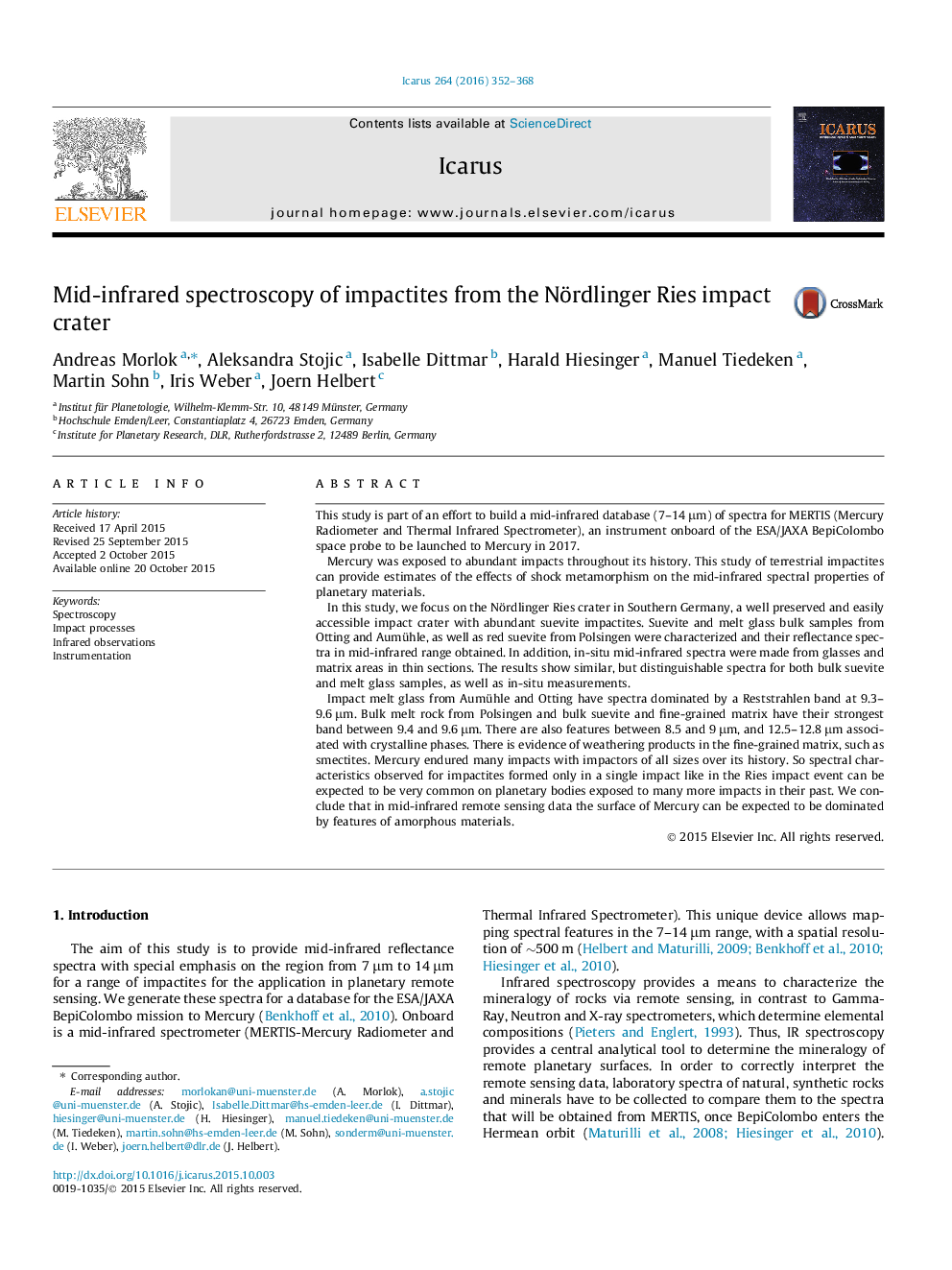| Article ID | Journal | Published Year | Pages | File Type |
|---|---|---|---|---|
| 8135922 | Icarus | 2016 | 17 Pages |
Abstract
Impact melt glass from Aumühle and Otting have spectra dominated by a Reststrahlen band at 9.3-9.6 μm. Bulk melt rock from Polsingen and bulk suevite and fine-grained matrix have their strongest band between 9.4 and 9.6 μm. There are also features between 8.5 and 9 μm, and 12.5-12.8 μm associated with crystalline phases. There is evidence of weathering products in the fine-grained matrix, such as smectites. Mercury endured many impacts with impactors of all sizes over its history. So spectral characteristics observed for impactites formed only in a single impact like in the Ries impact event can be expected to be very common on planetary bodies exposed to many more impacts in their past. We conclude that in mid-infrared remote sensing data the surface of Mercury can be expected to be dominated by features of amorphous materials.
Related Topics
Physical Sciences and Engineering
Earth and Planetary Sciences
Space and Planetary Science
Authors
Andreas Morlok, Aleksandra Stojic, Isabelle Dittmar, Harald Hiesinger, Manuel Tiedeken, Martin Sohn, Iris Weber, Joern Helbert,
